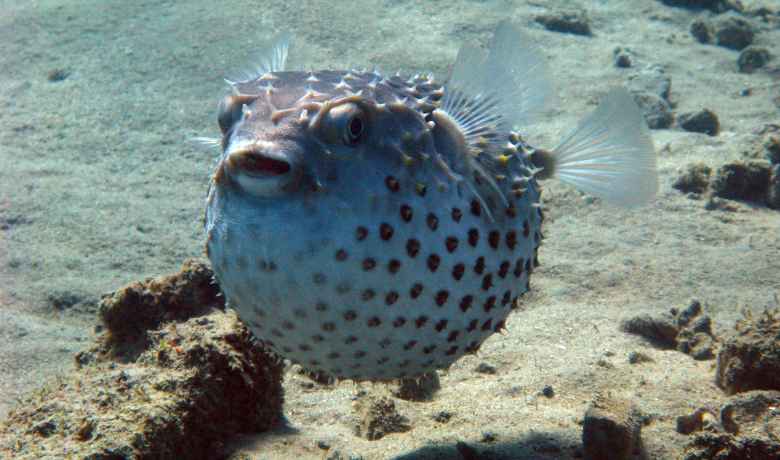Have you ever heard of a delicacy so dangerous that a single misstep could lead to certain death? Enter the Pufferfish, infamous for its potentially deadly toxins and the art of fugu preparation, which requires years of training to master. The question remains: can you eat Pufferfish without fear of harm? Join us as we explore the mysteries and dangers of this curious cuisine.
The Art of Pufferfish Preparation
In Japan, fugu, a dish made from Pufferfish, has been a culinary tradition for centuries. Skilled fugu chefs meticulously prepare the fish, taking great care to remove the toxic parts while preserving the delicate flavors of the meat. Each chef must undergo an extensive apprenticeship and pass a rigorous examination before being granted a license to serve fugu.
The preparation process involves carefully removing the toxic organs, including the liver, ovaries, and intestines, where the highest concentrations of tetrodotoxin are found. The remaining edible parts, such as the skin, muscle, and sometimes the fins, are skillfully sliced into paper-thin sashimi or cooked in various dishes.
Is it Safe to Eat Pufferfish?
While fugu chefs in Japan have mastered the art of preparing Pufferfish, consuming it still carries risks. Despite stringent regulations, incidents of pufferfish poisoning have occurred, often due to human error or low-level toxins that evade detection.
According to statistics, there have been cases of pufferfish-related poisonings and fatalities, albeit rare, mainly when the fish is consumed outside regulated establishments or prepared by untrained individuals. It is crucial to exercise extreme caution and only consume Pufferfish from reputable sources with certified fugu chefs.
Alternative Approaches: Pufferfish without the Toxin
Recent scientific advancements have sought to address the risks associated with consuming Pufferfish. Through selective breeding and genetic engineering, scientists have made progress in cultivating Pufferfish without the deadly toxin. These “poison-free” pufferfish offer the potential for safe consumption without compromising the taste and texture that make Pufferfish a sought-after delicacy.
Although still in its early stages, the development of non-toxic Pufferfish represents an exciting prospect for the future. It could revolutionize the culinary world by providing a safer alternative for pufferfish enthusiasts while preserving the cultural significance of this traditional dish.
Pufferfish Poisoning: Symptoms, Treatment, and Prevention
Pufferfish poisoning, also known as tetrodotoxin poisoning, is a severe condition resulting from consuming Pufferfish containing the potent neurotoxin tetrodotoxin. The symptoms of pufferfish poisoning typically manifest within a few minutes to a few hours after ingestion and can vary in severity.
Symptoms
The initial symptoms may include numbness and tingling in the lips, tongue, and extremities, followed by dizziness, nausea, vomiting, and abdominal pain. Muscle weakness, difficulty breathing, and paralysis can also occur as the toxin progresses. In severe cases, it can lead to respiratory failure and cardiac arrest, which can be life-threatening.
Treatment
If someone experiences symptoms of pufferfish poisoning, immediate medical attention is crucial. There is no specific antidote for tetrodotoxin, and treatment primarily focuses on supportive care. This may include ensuring adequate oxygenation, maintaining airway support, and providing necessary respiratory assistance. Gastric decontamination, such as induced vomiting or gastric lavage, may be considered if the ingestion is recent.
Prevention
Prevention is the key to avoiding pufferfish poisoning. It is essential to only consume Pufferfish from reputable sources, prepared by licensed and trained chefs who properly remove the toxic parts. In areas where regulations are in place, such as Japan, it is advisable to dine at certified Fugu restaurants. Additionally, individuals should be cautious when consuming Pufferfish outside regulated establishments or regions where proper preparation and certification may not be enforced.
Awareness and education about the risks of pufferfish poisoning are vital to prevent accidental ingestion. Recognizing the symptoms promptly and seeking immediate medical attention if poisoning is suspected is crucial. By taking these precautions, individuals can enjoy the unique flavors of Pufferfish while minimizing the potential risks associated with its consumption.
Can you eat Pufferfish?
Yes, some species of Pufferfish are considered a delicacy in Japan and other countries. However, it is essential to note that Pufferfish contain a highly toxic substance called tetrodotoxin, which can be fatal if not prepared correctly.
How is Pufferfish prepared for consumption?
To safely consume Pufferfish, it must be prepared by a licensed and trained chef who can remove the poisonous parts, such as the liver and ovaries. The flesh of the fish can then be served raw or cooked in various dishes.
What are the risks of eating Pufferfish?
The risks of consuming improperly prepared Pufferfish include paralysis, respiratory failure, and death. Even a tiny amount of tetrodotoxin can be deadly, so it is crucial to have a skilled chef prepare the fish.
Where is Pufferfish commonly eaten?
Pufferfish is most commonly consumed in Japan, where it is known as fugu. It is also eaten in other countries, such as South Korea, China, and Taiwan. However, due to the high risk of poisoning, regulations around the consumption of Pufferfish vary across different countries.
Conclusion
Pufferfish remains a delicacy that demands caution and respect. While the allure of its unique flavor and texture is undeniable, the risks associated with consuming Pufferfish cannot be ignored. Tetrodotoxin makes it potentially lethal, requiring stringent regulations and highly trained chefs to ensure its safe preparation.
Whether you indulge in this deadly delicacy or opt for alternative approaches, always prioritize your safety and seek expert advice. The world of Pufferfish is captivating, but understanding the risks involved is vital in navigating the allure and dangers associated with this intriguing fish.

